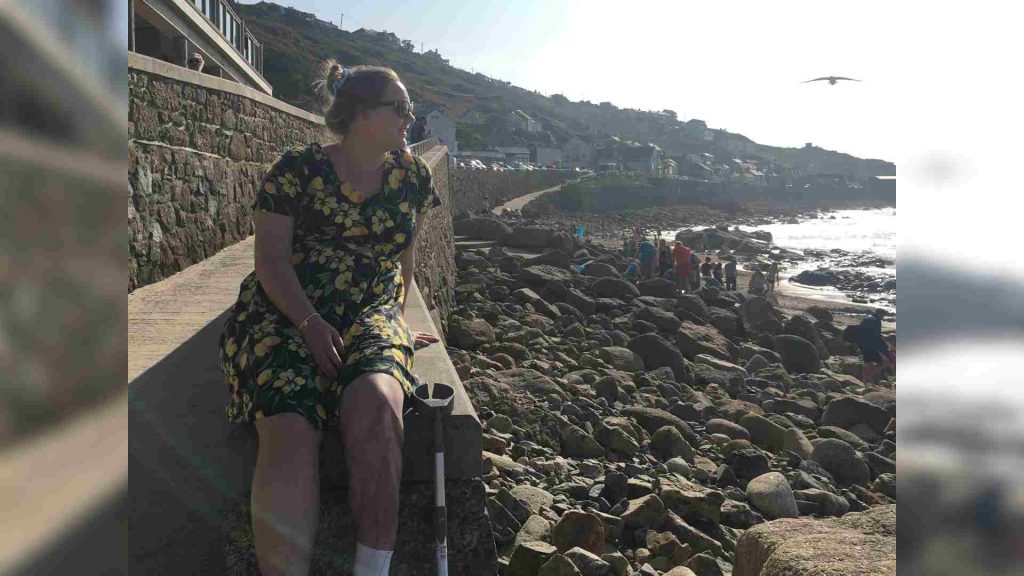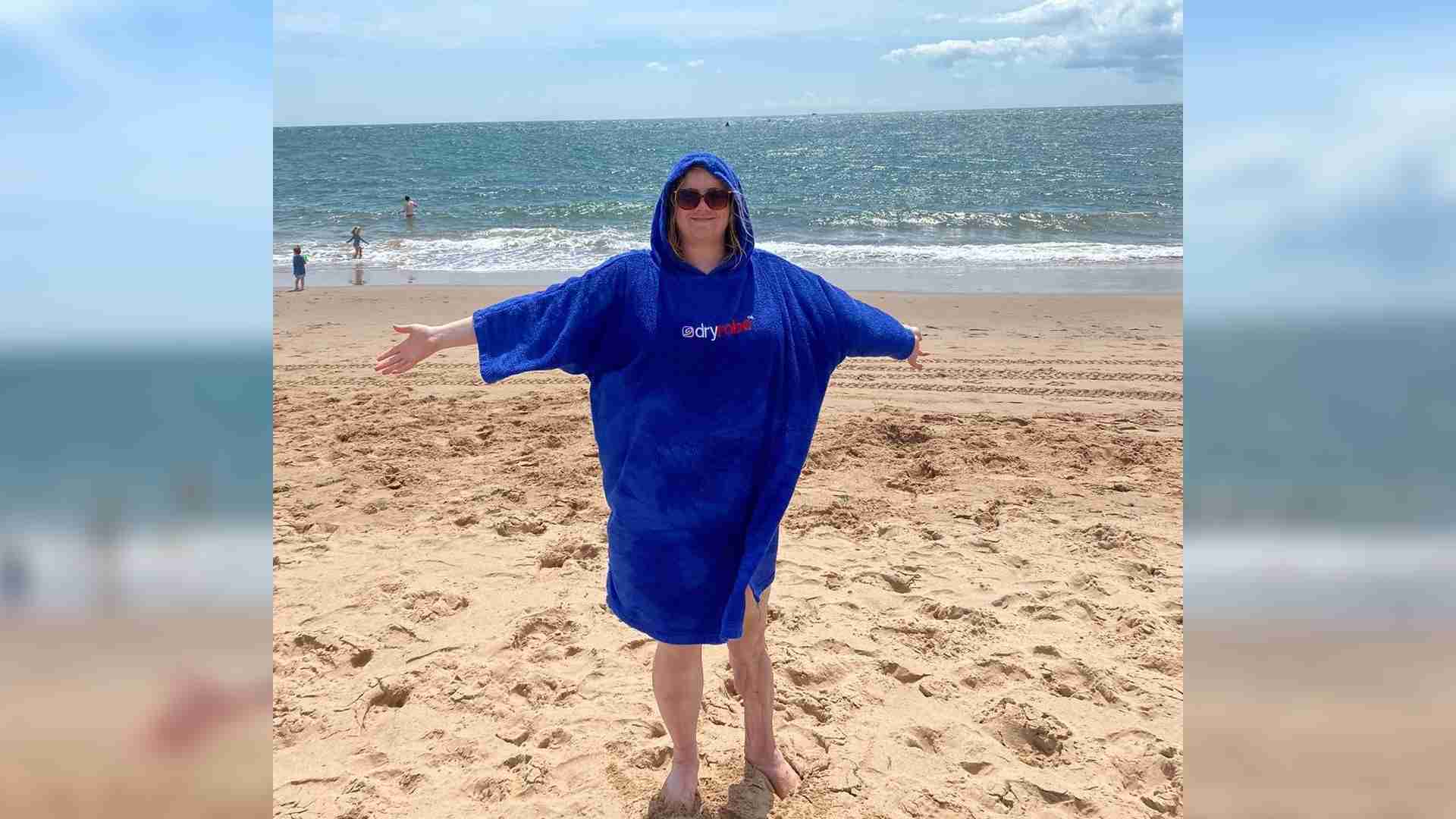Hi, my name is Jo and I gained a visible difference in 2018 when I was in a serious road crash. I lost most of the skin on my left leg and half of my calf muscle. It’s now a lot thinner than my right leg and is very visibly scarred.
The first time I saw my leg is burned into my memory. I remember not wanting to look at it and it felt so fragile. However, watching it improve and recover since then has been an incredible process. When it’s just me, or I’m with people I love, I like to show off how soft it is because I moisturise it daily, or marvel at the fact that it’s developed moles or body hair.
It’s when I’m around strangers that I become aware of my leg as a visible difference. I often alter what I wear so I don’t have to deal with stares, answer people’s questions, or handle unsolicited advice. I do have a prosthetic leg cover which I sometimes wear when I don’t want to cope with these things but have an outfit which involves showing my leg.
Changing Faces’ Peer Group Chat gave me a safe space to talk about how I was feeling and made me feel less alone.
Initially, I felt ashamed of wanting to cover it because it felt like I was being ashamed of myself. However, over time I’ve realised not wanting to deal with stares and questions has nothing to do with how I feel about myself, it’s about what I’m able to cope with that day. My scars are from a very traumatic memory for me and it is not something I enjoy talking about.
For example, once I was at a spa in a swimming costume and someone asked me what happened. That person, while I’m sure wasn’t intending to be hurtful, didn’t think about whether they might be asking something personal. A spa is not where I want to be thinking about a road crash! Sometimes I’ve felt so angry that I’ve involuntarily shouted, ‘What are you looking at?’ as people have stared on the street. I’ve had to work through my anger and being part of the Changing Faces’ Peer Group Chat helped me start to do that. Having people around me in their own processes of accepting their visible difference gave me a safe space to talk about how I was feeling and made me feel less alone. Seeing people further along in their own journey gave me hope I could get there too.

Jo believes you shouldn’t have to hide away just because you look different
As far as I’m aware, there are two reasons people ask about my visible difference. The first is that people look for a way to connect and they pick the most obvious thing. I’ve noticed when I take out my fashionable walking stick, people will ask about that rather than my visible difference directly.
I’ve tried multiple ways to let people know that I don’t want to talk about it. Sometimes I try to be shocking, other times I give as little information as possible, and sometimes I just tell them everything. These days, how I choose to handle the situation, depends on how I feel. Often, I’ll just shut the conversation down, which can upset people, but I try not to carry that with me. At the end of the day, it’s my story and I should be able to choose who I share it with.
The second reason that I believe people ask, is that we so rarely see bodies that look ‘visibly different’. Everyone I know who regularly sees my leg has stopped seeing it as a difference at all but as part of me. When I was in hospital, I remember saying that I hated it and one of my friends told me I have to love my leg and that it is an amazing sign of what bodies can do. My partner has also made a point of celebrating my difference. This continued support from people I love and trust has allowed me to internalise positive messages.
Listen to the positive messages you’re getting from people who love you.
I’ve managed to search out spaces where visible differences are portrayed positively, and that has helped me, but I don’t believe I should have had to do that. Better representation in campaigns, movies, everywhere would make such a difference, but the form that representation takes also matters. Once you see the pattern of people with visible differences being villains you can’t unsee it and every time I do it sends the message that my visible difference is bad.
The process of accepting my visible difference has happened alongside me beginning to identify as disabled. Finding strength in the disabled community and learning about the social model of disability has helped me to accept myself and see the strengths in my body. One of the crucial moments for me was seeing someone with an incredible colourful walking stick. I realised that to avoid being asked questions I would wear a lot of black or neutral colours, so I didn’t stand out. Following disabled role models on social media, educating myself and attending a Changing Faces support group really helped me, and now I love wearing colourful clothes. I’ve found that accepting myself made the stares matter less.
To other people who have acquired a visible difference like me, I would say, listen to the positive messages you’re getting from people who love you. Connect with people who have similar experiences through organisations like Changing Faces. And most of all, find what works for you, because ultimately everyone is different (see what I did there).
